If you're a musician, podcaster, or content creator using a Mac, you already have a powerful tool at your disposal. Macs are known for their excellent audio performance and compatibility with industry-standard recording software. However, to truly unlock your Mac's recording potential, you’ll need the right audio interface.
An audio interface is the heart of your recording setup, bridging your microphones, instruments, and speakers with your Mac. This guide will help you navigate the world of audio interfaces, ensuring you choose one that fits your needs and elevates your recordings.
Why You Need an Audio Interface for Mac
While your Mac's built-in audio system is fine for casual use, it lacks the quality and flexibility required for professional recordings. An audio interface delivers:
- Better Sound Quality: High-quality preamps and converters ensure crystal-clear audio.
- Low Latency: Smooth playback and recording without lag.
- Versatile Connectivity: XLR, TRS, and MIDI inputs allow you to connect microphones, instruments, and other gear.
- Phantom Power: Essential for condenser microphones that require external power.
Key Features to Consider
1. Mac Compatibility
Ensure the interface is fully compatible with macOS. Look for interfaces with Core Audio support, as they integrate seamlessly with macOS without requiring additional drivers.
2. Input and Output Options
- Inputs: Determine how many microphones or instruments you’ll need to connect simultaneously. Solo artists can often manage with two inputs, while bands may require eight or more.
- Outputs: Multiple outputs are useful for connecting studio monitors and headphones.
3. Connectivity Type
- USB-C/Thunderbolt: Most modern Macs favor USB-C and Thunderbolt connections for fast data transfer and low latency. Ensure your interface supports these connections for optimal performance.
- USB-A: Older Macs or versatile setups may still benefit from USB-A support.
4. Audio Resolution
Aim for interfaces with at least 24-bit/96kHz resolution for professional-grade recordings. Higher specs, like 192kHz, provide additional headroom for detailed sound capture.
5. Portability
If you’re often on the go, consider a compact, bus-powered interface that doesn’t require an external power supply.
6. Software Integration
Many interfaces come with bundled recording software or plugins. Check if the included tools complement your workflow.
Top Audio Interfaces for Mac Users
1. Universal Audio Apollo Twin X
- Connection: Thunderbolt
- Why It’s Great: The Apollo Twin X is a premium interface with world-class preamps and built-in DSP for real-time plugin processing. Its Unison preamps emulate classic analog gear, making it a favorite for professional studios.
- Best For: Musicians and producers seeking top-tier sound.
- Price: $$$$
2. Focusrite Scarlett 2i2 (4th Gen)
- Connection: USB-C
- Why It’s Great: This beginner-friendly interface offers excellent sound quality at an affordable price. Its auto-gain and Clip Safe features simplify the recording process, especially for first-timers.
- Best For: Solo artists and home studios.
- Price: $$.
3. MOTU M2
- Connection: USB-C
- Why It’s Great: With ultra-low latency and high-quality preamps, the MOTU M2 is perfect for Mac users who need reliable performance. Its full-color LCD screen provides precise level monitoring.
- Best For: Singer-songwriters and podcasters.
- Price: $$.
4. Audient iD14 MKII
- Connection: USB-C
- Why It’s Great: The Audient iD14 features top-notch preamps and an intuitive interface. Its "ScrollControl" function turns the volume knob into a DAW controller, streamlining your workflow.
- Best For: Small studios and advanced home setups.
- Price: $$$
5. Apogee Duet 3
- Connection: USB-C
- Why It’s Great: Apogee is known for its Mac-friendly designs, and the Duet 3 delivers pristine audio quality in a sleek package. Its portability and professional-grade features make it ideal for creators on the move.
- Best For: Mobile recording and professional musicians.
- Price: $$$$
Setting Up Your Interface with a Mac
-
Connect the Interface
Use the appropriate cable (USB-C, Thunderbolt, or USB-A) to connect your interface to your Mac. Most interfaces are plug-and-play, especially those compatible with Core Audio. - Select the Interface in macOS
- Open System Preferences > Sound.
- Under the Input and Output tabs, select your audio interface.
-
Configure in Your DAW
Open your digital audio workstation (DAW) and select the interface as the primary input/output device in the audio settings. -
Test Your Setup
Connect your microphone or instrument and test the input levels to ensure everything is working correctly.
Tips for Maximizing Your Recording Experience
1. Optimize Your Mac
- Close unnecessary applications to free up system resources.
- Keep macOS and your DAW updated for compatibility and performance improvements.
2. Monitor with Studio Headphones
Use quality headphones to accurately hear your recordings without interference from room acoustics.
3. Use Pop Filters and Shock Mounts
These accessories enhance vocal recordings by reducing plosives and vibrations.
4. Experiment with Plugins
Many interfaces include bundled plugins. Experiment with EQ, compression, and reverb to enhance your recordings.
Budget-Friendly Alternatives
If you’re on a tight budget, consider:
- Behringer U-Phoria UMC22: An affordable USB interface with basic features for beginners.
- PreSonus AudioBox USB 96: Compact, reliable, and great for simple setups.
- M-Audio M-Track Solo: A highly affordable option for entry-level users.
Conclusion
Choosing the right audio interface for your Mac can transform your recordings from amateur to professional. Whether you’re a beginner seeking simplicity or a seasoned producer needing advanced features, there’s an interface tailored to your needs. Consider your workflow, budget, and creative goals to find the perfect match.

